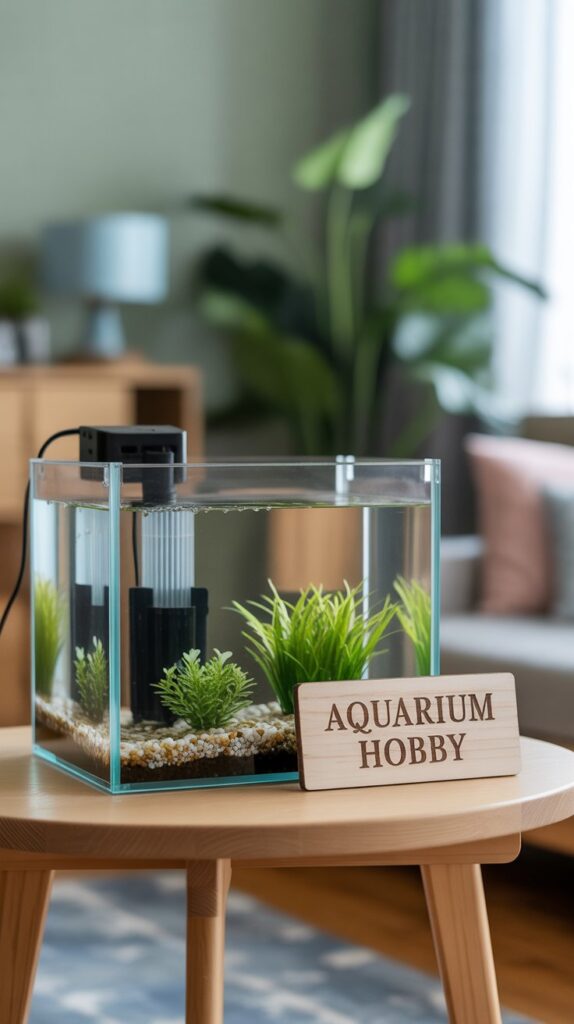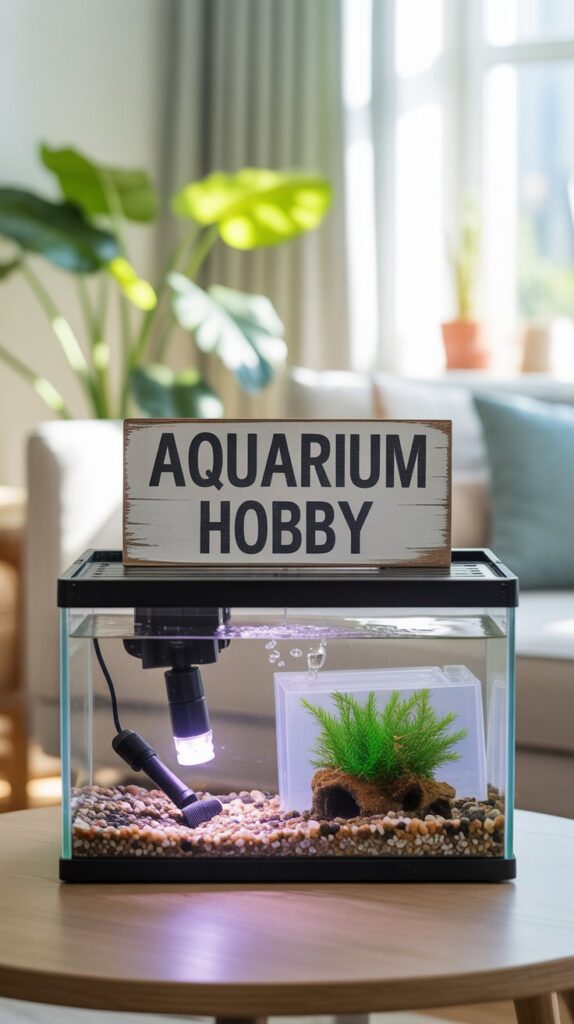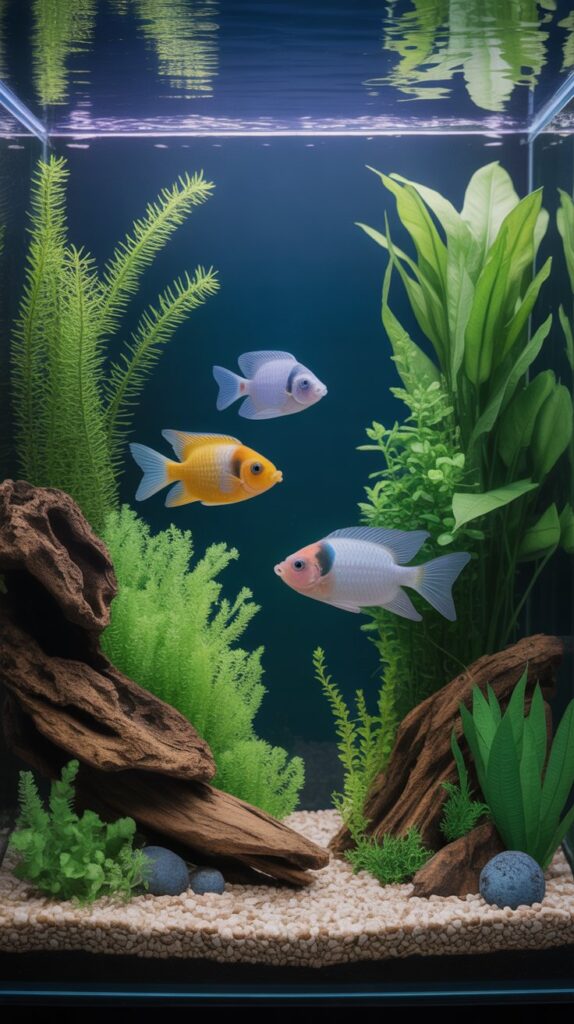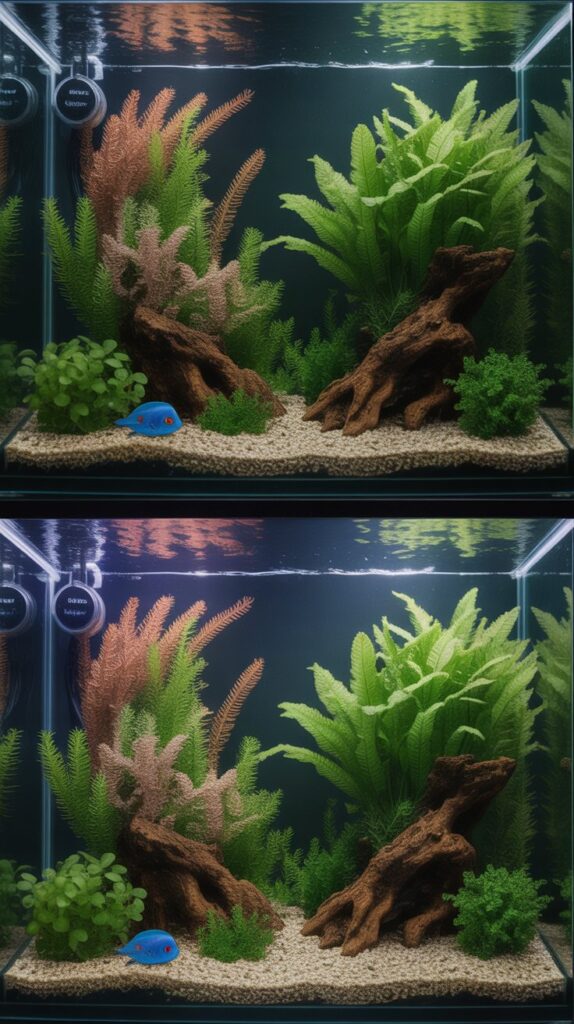Setting up an aquarium is one of the most rewarding hobbies for nature lovers, pet enthusiasts, and people who enjoy a peaceful home environment. However, beginners often feel overwhelmed by the number of supplies, tools, and accessories needed to start a healthy fish tank. This is where an aquarium starter kit comes in handy.
An aquarium starter kit provides everything you need in one package, making the setup process easier, budget-friendly, and beginner-friendly. Whether you want to keep freshwater fish, saltwater fish, or even create a planted aquascape, a starter kit is the best way to dive into the aquarium hobby without confusion.
In this detailed guide, we will cover everything about aquarium starter kits—their benefits, what they include, how to choose the right one, and how to set it up for long-term success.
What is an Aquarium Starter Kit?

An aquarium starter kit is a pre-packaged set that contains essential aquarium equipment for beginners. Instead of buying items separately, you get a bundled package with the basic supplies needed to establish a healthy aquarium.
Most aquarium starter kits include:
- Tank (glass or acrylic) – The centerpiece of your aquarium setup.
- Filter system – Keeps the water clean and free from toxins.
- Lighting system – Essential for fish visibility and plant growth.
- Heater (in some kits) – Maintains stable water temperature.
- Water conditioner – Removes harmful chlorine and chemicals from tap water.
- Fish food samples – Basic diet to start feeding your fish.
- Aquarium decorations or substrate – Sometimes included to enhance aesthetics.
- Instruction manual – Step-by-step guide to set up your tank properly.
While different kits vary in size and included accessories, all aim to simplify the process for newcomers to fishkeeping.
Benefits of Using an Aquarium Starter Kit
If you’re just starting out in the aquarium hobby, buying a starter kit has many advantages:
1. Beginner-Friendly Setup
Aquarium starter kits are designed for people with little to no experience. The included instructions and pre-selected equipment make setup straightforward.
2. Cost-Effective
Purchasing items separately can be expensive. A starter kit bundles the essentials at a lower price, saving you money.
3. Time-Saving
Instead of researching and buying multiple components, you get everything in one package. This eliminates guesswork and speeds up the setup process.
4. Compatibility Guaranteed
The included equipment (filter, lights, heater, etc.) is designed to work together. This reduces the risk of mismatched or underpowered equipment.
5. Encourages Learning
By starting simple, beginners can focus on learning the basics of water care, fish health, and tank maintenance before upgrading to advanced equipment.
Types of Aquarium Starter Kits

Not all starter kits are the same. Depending on your goals, you can choose from different types:
1. Freshwater Aquarium Starter Kits
- Best for beginners.
- Easier to maintain compared to saltwater tanks.
- Perfect for fish like guppies, tetras, mollies, and bettas.
2. Saltwater Aquarium Starter Kits
- Designed for marine enthusiasts.
- Includes special filtration and lighting for corals and marine fish.
- Requires more maintenance and experience.
3. Planted Aquarium Starter Kits
- Designed for aquascaping.
- Includes plant-friendly LED lights and sometimes CO₂ systems.
- Great for nature aquariums with live plants.
4. Nano Aquarium Starter Kits
- Small tanks (5–15 gallons).
- Great for betta fish, shrimp, or small community fish.
- Compact and space-saving, ideal for apartments or offices.
5. Kids’ Aquarium Starter Kits
- Often smaller tanks with colorful decorations.
- Simple to maintain.
- Helps children learn responsibility while enjoying pets.
Choosing the Right Aquarium Starter Kit
When selecting an aquarium starter kit, consider the following factors:
1. Tank Size
- Small kits (5–10 gallons) are easy to maintain but limit fish options.
- Medium kits (20–30 gallons) offer more stability and flexibility.
- Large kits (40+ gallons) are ideal for more fish and aquascaping but require more space.
2. Material (Glass vs. Acrylic)
- Glass tanks: Scratch-resistant, affordable, clear visibility.
- Acrylic tanks: Lightweight, durable, but prone to scratches.
3. Filtration System
Ensure the kit includes a reliable filter. A good filter should provide mechanical, chemical, and biological filtration.
4. Lighting
If you want live plants, check if the kit comes with LED lights suitable for plant growth. For fish-only tanks, basic LED lights are sufficient.
5. Heater
If you plan to keep tropical fish, make sure the kit has a heater or budget for one separately.
6. Budget
Starter kits come in different price ranges. Compare features and quality before making a purchase.
How to Set Up an Aquarium Starter Kit

Once you have your aquarium starter kit, follow these steps:
Step 1: Unpack and Clean the Tank
- Rinse the tank with water (no soap or chemicals).
- Place it on a sturdy, level surface away from direct sunlight.
Step 2: Add Substrate and Decorations
- Rinse gravel or sand before adding.
- Place rocks, driftwood, or decorations.
- Secure plants if included.
Step 3: Install Equipment
- Set up the filter, heater, and lights as instructed.
- Ensure cords and plugs are dry and safely positioned.
Step 4: Fill with Water and Condition It
- Slowly fill the tank with dechlorinated water.
- Add water conditioner to remove chlorine.
Step 5: Cycle the Tank
- Run the aquarium for at least 1–2 weeks before adding fish.
- Cycling allows beneficial bacteria to build up and prevents fish stress.
Step 6: Add Fish Slowly
- Start with a few hardy fish.
- Acclimate them by floating the bag in the tank before release.
Step 7: Monitor and Maintain
- Test water regularly (pH, ammonia, nitrite, nitrate).
- Clean the tank weekly and perform partial water changes.
Best Fish for Aquarium Starter Kits
If you’re a beginner, start with hardy and easy-to-care-for species:
- Guppies – Colorful and adaptable.
- Mollies – Great for community tanks.
- Platies – Peaceful and active.
- Tetras (Neon, Cardinal, Ember) – Small and schooling fish.
- Betta Fish – Ideal for nano aquariums.
- Corydoras Catfish – Bottom dwellers that clean substrate.
- Zebra Danios – Very hardy and lively.
Common Mistakes Beginners Make with Aquarium Starter Kits

- Adding too many fish at once.
- Skipping the nitrogen cycle.
- Overfeeding fish, leading to poor water quality.
- Using tap water without conditioner.
- Choosing incompatible fish species.
- Neglecting regular water changes.
Maintaining Your Aquarium Starter Kit
- Perform 20–30% water changes weekly.
- Clean the filter media once a month (in tank water, not tap).
- Wipe algae from glass with a magnetic cleaner.
- Replace broken equipment immediately.
- Monitor fish behavior and health regularly.
Conclusion
An aquarium starter kit is the best way to enter the fishkeeping hobby without feeling overwhelmed. With everything included in one package, it saves time, money, and effort while providing a solid foundation for your first aquarium. Whether you’re keeping guppies, tetras, or bettas, a starter kit helps you build a safe, beautiful, and thriving aquatic environment.
As you gain experience, you can upgrade equipment, experiment with aquascaping, and try more advanced fish species. But for beginners, starting with a starter kit is the smartest choice.
FAQs About Aquarium Starter Kits
Q1: What is the best aquarium starter kit for beginners?
A: A 20-gallon freshwater starter kit with a filter, heater, and LED lighting is usually best for beginners because it’s stable and versatile.
Q2: Can I put fish in my aquarium starter kit immediately?
A: No, you should cycle the tank first, which takes 1–2 weeks. This helps build beneficial bacteria that keep the water safe for fish.
Q3: Do starter kits include everything I need?
A: Most kits include the basics (tank, filter, light, conditioner, and food). However, you may need to buy additional decorations, substrate, test kits, and a heater (if not included).
Q4: How often should I clean my aquarium starter kit?
A: Perform small weekly water changes and monthly filter maintenance to keep your tank healthy.
Q5: What fish are best for a small starter kit?
A: Betta fish, guppies, neon tetras, and corydoras catfish are excellent choices for small tanks.
Q6: Can I use an aquarium starter kit for saltwater fish?
A: Some advanced starter kits are designed for saltwater setups, but most are freshwater. Beginners should start with freshwater fish.
Q7: How long do aquarium starter kits last?
A: With proper maintenance, the tank and equipment can last for years. Filters may need replacement parts, and lights might need upgrades over time.

